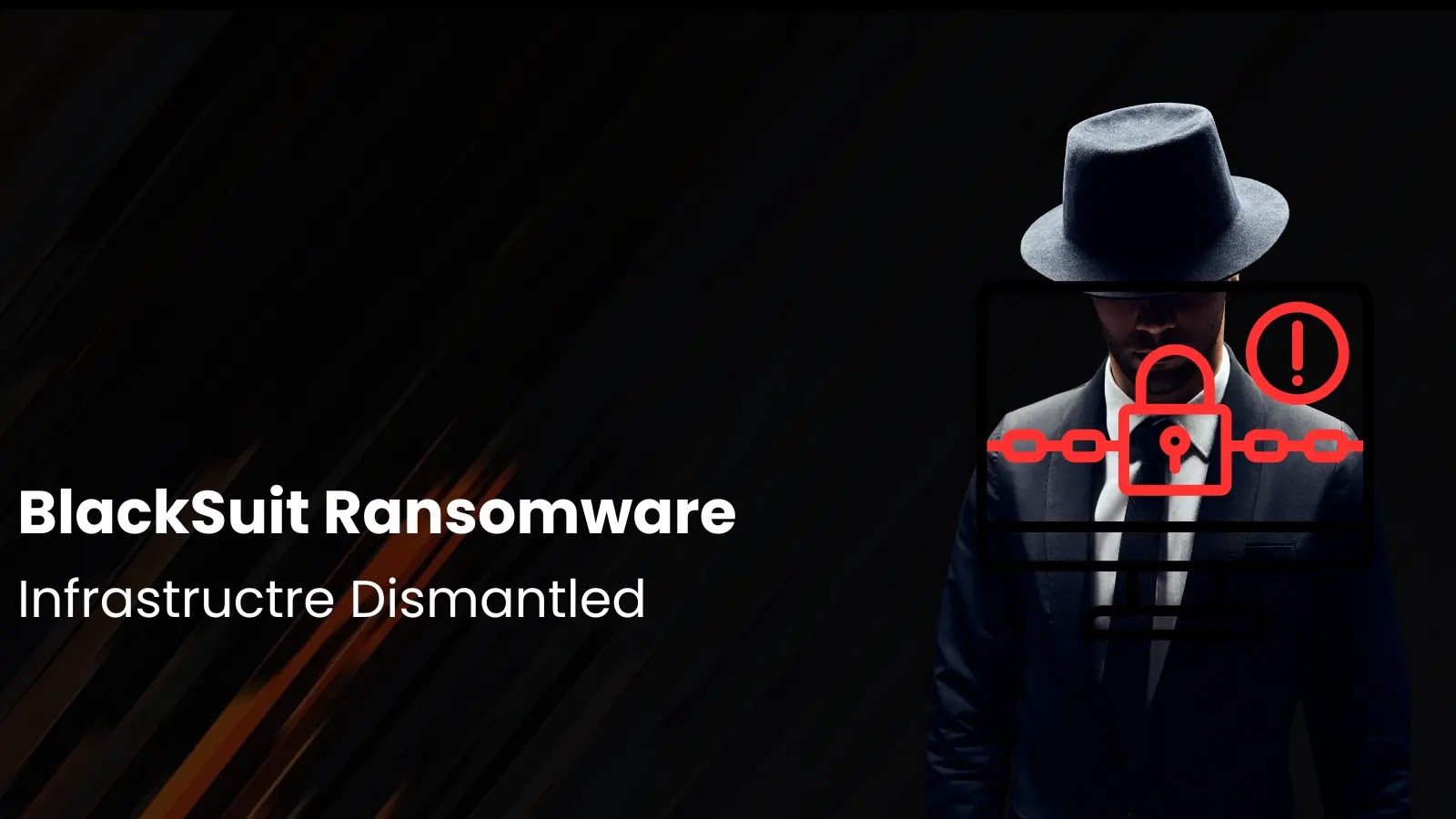
US Confirms Shutdown of BlackSuit Ransomware That Hacked Over 450 Organizations
In a significant victory against the relentless tide of cybercrime, the U.S. government has announced the successful dismantling of the BlackSuit ransomware operation. This decisive action, spearheaded by Immigration and Customs Enforcement’s (ICE) Homeland Security Investigations (HSI), marks a critical blow against a group responsible for extorting over 450 organizations globally. The operation involved seizing crucial digital infrastructure, including servers, domains, and other assets integral to BlackSuit’s illicit activities, from deploying ransomware to laundering ill-gotten gains.
The Anatomy of a Takedown: Operation BlackSuit
The coordinated multi-agency effort against BlackSuit underscores the evolving strategies law enforcement employs to combat sophisticated cyber threats. By targeting the very infrastructure that enables ransomware attacks, authorities disrupt the entire chain of operation, from initial compromise to financial obfuscation. This proactive approach aims not only to apprehend perpetrators but also to cripple their ability to conduct future attacks.
- Infrastructure Seizure: Servers and domains used for ransomware deployment and victim extortion were seized.
- Financial Disruption: Digital assets linked to money laundering activities were confiscated.
- Global Impact: The operation addresses a threat that impacted over 450 organizations worldwide.
BlackSuit Ransomware: A Persistent Threat
BlackSuit emerged as a successor to the notorious Royal ransomware, employing similar tactics and code structures. It operated as a Ransomware-as-a-Service (RaaS) model, providing its tools and infrastructure to affiliates who then carried out the actual attacks. This model allowed BlackSuit to scale its operations rapidly and cast a wide net across various industries. While specific CVEs directly associated with BlackSuit’s unique exploits are not publicly cataloged as a distinct vulnerability, its affiliates often exploited common vulnerabilities used by many ransomware groups, such as:
- CVE-2021-34473: Exploitation of ProxyShell vulnerabilities in Microsoft Exchange Server. For more details, visit CVE-2021-34473.
- CVE-2023-28252: Windows CLFS Elevation of Privilege Vulnerability, often used for post-exploitation lateral movement. More information can be found at CVE-2023-28252.
- Weak RDP credentials and unpatched VPN solutions.
BlackSuit’s modus operandi included data exfiltration prior to encryption, enabling double extortion tactics. This meant victims faced not only the loss of access to their data but also the threat of public exposure of sensitive information if they refused to pay the ransom.
Implications for Cybersecurity Preparedness
The takedown of BlackSuit serves as a stark reminder of the ongoing threat posed by ransomware, but also as a testament to the effectiveness of international cooperation and proactive law enforcement. For organizations, the key takeaways remain consistent:
Remediation Actions and Best Practices
Despite the takedown, the tactics and typical entry points leveraged by groups like BlackSuit persist. Organizations must reinforce their defensive posture.
- Patch Management: Implement a rigorous patch management program to ensure all systems, particularly internet-facing servers and critical infrastructure, are updated against known vulnerabilities promptly.
- Strong Authentication: Enforce multi-factor authentication (MFA) for all remote access services, administrative accounts, and critical business applications.
- Employee Training: Conduct regular cybersecurity awareness training to educate employees about phishing, social engineering, and other common attack vectors.
- Data Backup and Recovery: Maintain immutable, offline backups of critical data, and regularly test recovery procedures to ensure business continuity in the event of an attack.
- Network Segmentation: Implement strict network segmentation to limit lateral movement within the network if a breach occurs.
- Endpoint Detection and Response (EDR): Deploy EDR solutions to monitor endpoints for suspicious activity and enable rapid threat detection and response.
- Incident Response Plan: Develop and regularly update a comprehensive incident response plan, including clear roles, responsibilities, and communication protocols.
Recommended Cybersecurity Tools
| Tool Name | Purpose | Link |
|---|---|---|
| Tenable Nessus | Vulnerability scanning and assessment | https://www.tenable.com/products/nessus |
| CrowdStrike Falcon Insight | Endpoint Detection and Response (EDR) | https://www.crowdstrike.com/products/endpoint-security/falcon-insight-edr/ |
| Veeam Backup & Replication | Data backup, recovery, and ransomware protection | https://www.veeam.com/ |
| Microsoft Defender for Endpoint | Comprehensive endpoint security and threat intelligence | https://www.microsoft.com/en-us/security/business/endpoint-security/microsoft-defender-for-endpoint |
A Victory, Not the End of the War
While the dismantling of BlackSuit is a significant achievement and a strong message to cybercriminals, it is crucial to recognize that the threat landscape is dynamic. New ransomware variants and groups will undoubtedly emerge. This successful operation reinforces the importance of a multi-faceted approach to cybersecurity, combining robust defensive measures with proactive law enforcement operations. Organizations must remain vigilant, continuously assessing their security posture and adapting to emerging threats to safeguard their digital assets and operations.





